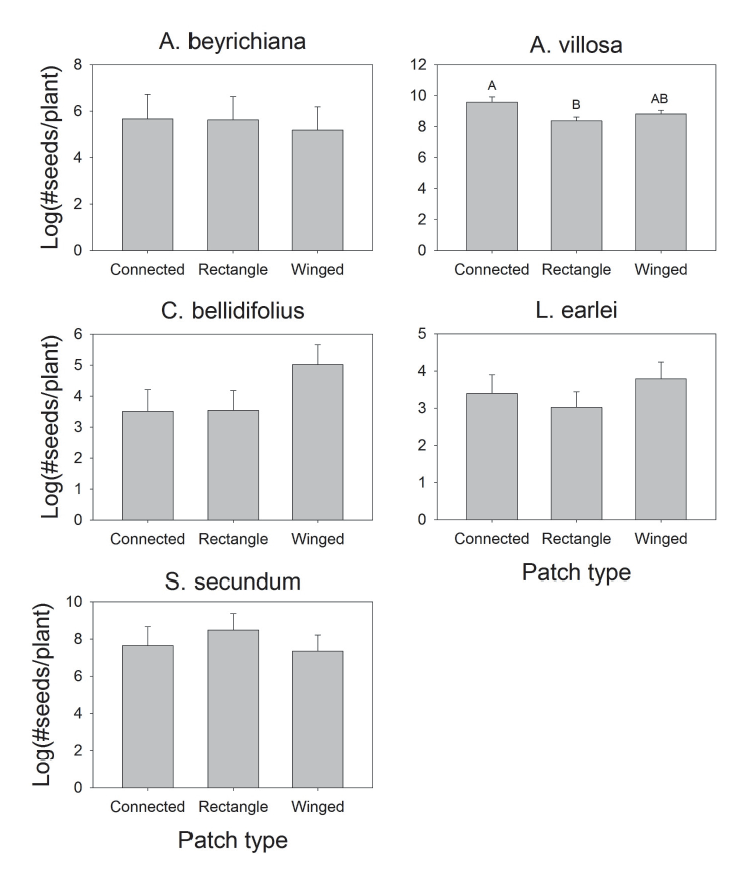
Ecological Archives E096-235-A1
Lars A. Brudvig, Ellen I. Damschen, Nick M. Haddad, Douglas J. Levey, and Joshua J. Tewksbury. 2015. The influence of habitat fragmentation on multiple plant–animal interactions and plant reproduction. Ecology 96:2669–2678. http://dx.doi.org/10.1890/14-2275.1
Appendix A. Figures illustrating plant reproduction across experimental fragment types and distances from fragment edge.
Fig. A1. Plant reproduction of five longleaf pine understory herbs in experimental habitat fragments. Fragments were either connected by corridors, or unconnected; unconnected fragments were either rectangular (low edge-to-area ratio) or winged (high edge-to-area ratio) in shape. Mixed effects models which included patch type and distance from edge as fixed effects and replicate experimental block as a random effect showed an effect of patch type for A. villosa (F2,9.23 = 4.4, p = 0.05) and no effect of patch type for A. beyrichiana (F2,12.4 = 0.2, p = 0.87), C. bellidifolius (F2,15.5 = 2.6, p = 0.11), L. earlei (F2,2.3 = 1.4, p = 0.40), or S. secundum (F2,25.1 = 1.1, p = 0.34). Different letters indicate statistically significant differences between patch types, within species (linear contrasts p < 0.05).
Fig. A2. Plant reproduction of five longleaf pine understory herbs as a function of distance from edge in experimental habitat fragments. Mixed effects models which included patch type and distance from edge as fixed effects and replicate experimental block as a random effect showed an effect of edge distance for A. villosa (F3,96.8 = 3.9, p = 0.01) and S. secundum (F2,88.7 = 2.7, p = 0.05), but no effect of edge distance for A. beyrichiana (F3,81.6=0.1, p = 0.97), C. bellidifolius (F3,80.4 = 0.9, p = 0.43), L. earlei (F3,68.3 = 0.8, p = 0.52). Different letters indicate statistically significant differences between edge distances, within species (linear contrasts p < 0.05).